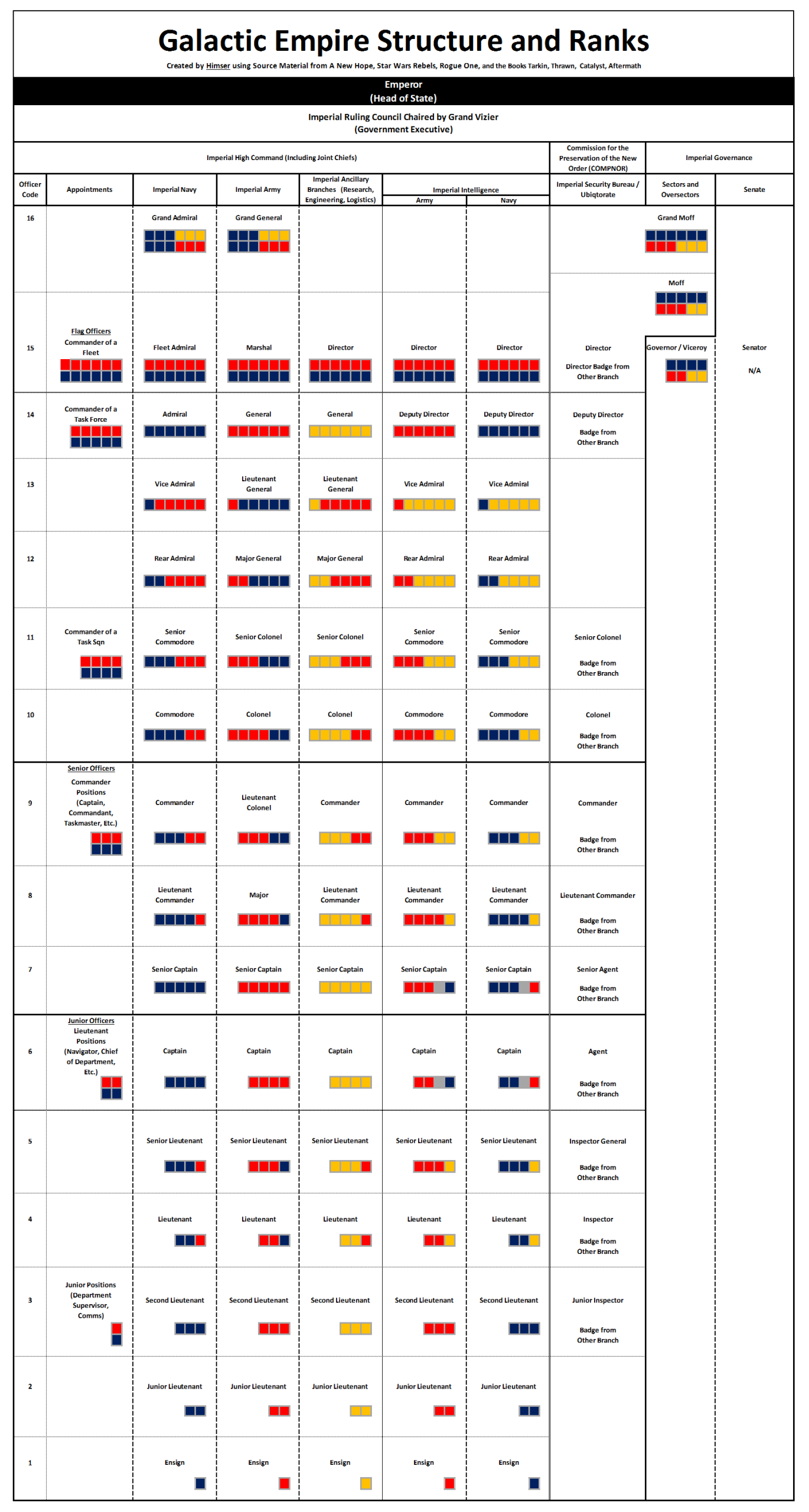I used to think those little colored tiles on Imperial uniforms were just cool costume details. But once I really looked into them, I realized they’re actually a full ranking system hiding in plain sight. The colors, the tile count, and even how they’re arranged all reveal someone’s branch, status, and authority. It’s way more organized — and more revealing — than it looks.
Color Breakdown: What Each One Means

Credit: Imgur
Each color on those little rectangles connects to a specific branch:
- Blue is for the Imperial Navy — fleet command, ship officers, anything space-related.
- Red stands for the Imperial Army — ground forces, armor divisions, stormtrooper command.
- Yellow is usually support services — things like research, engineering, logistics, or intelligence roles like the ISB.
The more of a color you see, the more authority that person likely has in that branch. If someone’s badge is mostly blue, they probably answer to the Navy. A more even color split means cross-branch command.
When Colors Mix (And What If One Color Dominates)
Once you understood the color meanings, the combinations started telling another story:
- Red + Blue: Most common combo. It’s used a lot for commanders who deal with both Army and Navy — like Rear Admirals or Major Generals.
- Red + Yellow: Usually signals someone working in support or research roles under Army jurisdiction.
- Blue + Yellow: You’ll see this with Navy engineers or technical intelligence officers — part of the fleet, but not front-line.
- Red + Blue + Yellow: Rare, but when it shows up, the officer probably has Empire-wide authority — especially if they’re high-ranking.
And when one color outweighs the others, that tells you even more:
- If blue outnumbers red and yellow, the officer is mainly Navy, but still works with Army or Intel.
- If red dominates, they’re Army-first, with extra duties.
- A balanced setup like 3 red and 3 blue suggests shared command between two branches.
- When yellow is added, it usually means oversight roles like Intelligence, R&D, or logistics — especially if it replaces blue or red.
This kind of imbalance is super common at the top. Grand Admirals and Directors often need to manage more than one branch, but you can still tell where their core authority lies by which color shows up most.
Some Real Examples from the Empire
Here are some notable characters and what their badges really mean, based on the actual system:
Grand Admiral Thrawn
- Tile layout: 6 blue, 3 red, 3 yellow
- Rank Code: 16
- He has full-spectrum command — Navy, Army, and Intelligence. But the extra blue tiles show that his home branch is the Navy.
Admiral Piett
- Tile layout: 6 blue over 6 red
- Rank Code: 15
- Classic senior fleet officer. Pure Navy, no yellow involved, which means he didn’t have ISB or support powers.
General Veers
- Tile layout: 4 red over 4 blue
- Rank Code: 11
- This setup marks him as a Major General with command over ground units and some coordination with Navy — perfect for his role leading AT-ATs in Empire Strikes Back.
Director Orson Krennic
- Tile layout: 6 red over 6 blue
- Rank Code: 15
- Even though his badge looks like a fleet admiral’s, he was actually from Military R&D. His tile colors reflect command-level status, but no yellow — so no official intel power.

